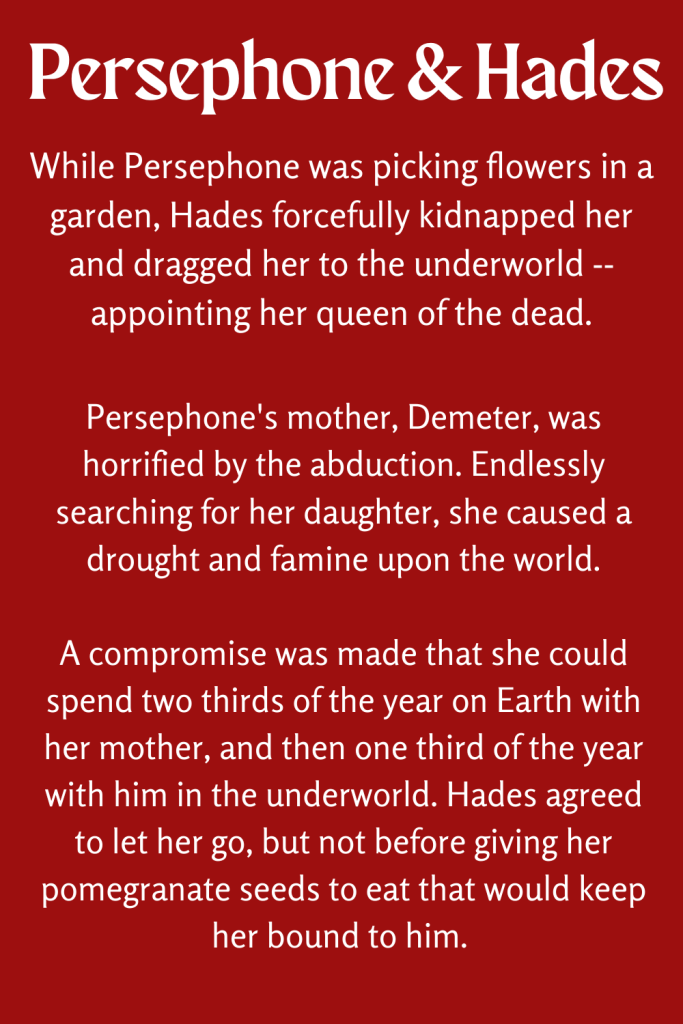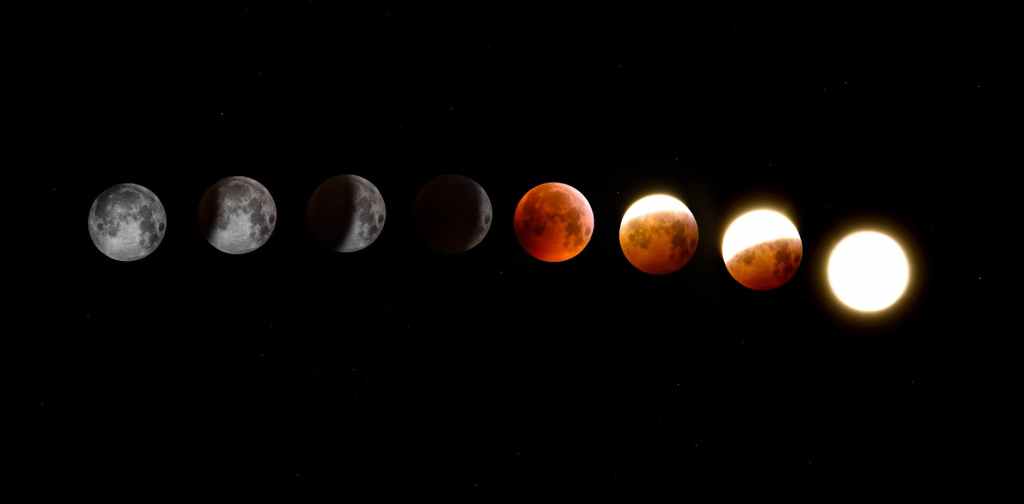Persephone is an ancient Greek goddess — who’s name is pronounced like purr-seff-uh-nee (rhymes with Stephanie.)
The energy surrounding Persephone is very dark, gothic, and almost gloomy. Yet ironically, she is associated with springtime and fertility. Representing death and rebirth, Persephone draws many parallels to the goddesses Isis and Kali.
Persephone is the daughter of Zeus and Demeter. Alongside, she is the wife of the Greek god Hades (or “Pluto” in Roman.) The story of how Persephone and Hades united is a bit ~controversial.~
Persephone & Hades

Hades is known as the king of the underworld, identical to the Egyptian god Osiris (husband of Isis.) Hades rarely leaves the underworld, assuring that his subjects do not escape. He takes his responsibility as guardian very seriously.
Hades has a somewhat complex personality — as he may come across as intimidating, powerful, and demanding on the surface, he is actually quite shy, passive, and uncomfortable with too much attention. Hades puts on a cold and mysterious front to cover up how soft he is inside.
Upon gaining a fascination for Persephone, Hades asked Zeus for permission to court his daughter. In return, Zeus happily approved. And so, while Persephone was picking flowers in a garden, Hades forcefully kidnapped her and dragged her to the underworld — appointing her queen of the dead.
Persephone’s mother, Demeter, was horrified by the abduction. Endlessly searching for her daughter, she caused a drought and famine upon the world, forcing Zeus to come in and intervene. Zeus sent Hermes to the underworld in order to persuade Persephone’s return. A compromise was made that she could spend two thirds of the year on Earth with her mother, and then one third of the year with him in the underworld. Hades agreed to let her go, but not before giving her pomegranate seeds to eat that would keep her bound to him.
The significance of this myth is said to be the reason for the change of the seasons — that the winter months are when Persephone is in the underworld spending time with Hades, and the warmer days of the year are when she is here on Earth spending time with her mother. However, this theory/explanation is not confirmed.

Eleusinian Mysteries
In ancient times, “mystery schools” — also known as “mystery religions” or “mystery cults” were very common. These mystery schools typically involved a priesthood who taught their members sacred knowledge passed down through the generations.
The Eleusinian Mysteries is Greco-Roman mystery school dating back to at least 1500 BC, before dying in out in 300 AD around the rise of Christianity and the Dark Ages. Persephone and Demeter, as well as the story of her kidnapping, was a focal point of theirs. It has been proposed that per tradition, members would reenact Demeter’s search for Persephone.
With the disappearance of mystery schools, came the disappearance of their mysteries. There is surely so much more about Persephone and her story that has been lost, sadly. It is phenomenal that any knowledge of her remains to this day.
Appearance

Persephone is typically depicted in a robe, often with a hooded head. She usually carries some type of object — either a box or a piece of grain. The box resembles her connection to Pandora, and the grain relates to her mother Demeter as the harvest goddess. Her hair ranges in color from red, to black, to brown.
Purity & Darkness
As Persephone’s myth relates to the changing of the seasons, she corresponds with both spring (returning from the underworld) and autumn (going back to the underworld.) Although many sources claim her as the goddess of springtime, Persephone plays a key role in autumn-time too.
Persephone is a multifaceted goddess. Her connection to spring reveals innocence and purity, while her connection to Hades and the underworld simultaneously paints her with dark energy.

Modern perception
Persephone continues to make an impact in the media and literature, as well as among neopagans and Wiccans. Many are attracted to Persephone because of her ability to exist as both “sweet and naive” and “powerful and badass” at the same time.
Modern-day fans and followers have dissected her story, including her romance with Hades, and found deep beauty beneath the surface. What appears to be a forceful abduction is argued as something more — that Persephone is too powerful to be a victim of Hades, that she was not obliged to him but rather, that she made the choice to let him overpower her.
And while Hades may seem like a monster who manipulated Persephone, today’s admirers of their story will tell you that Hades is far more “adorable” than “intimidating.” Hades was not smooth enough to talk and flirt with Persephone — instead, his urgency for her made him whisk her away. Hades is loyal through his dedication to Persephone, as well as his dedication to his job as ruler of the underworld. While infidelity is a common theme in mythology, Hades only has eyes for Persephone.

Sources:
- https://en.wikipedia.org/wiki/Persephone
- https://www.worldhistory.org/persephone/
- https://gizmodo.com/the-psychedelic-cult-that-thrived-for-nearly-2000-years-5883394






Leave a comment